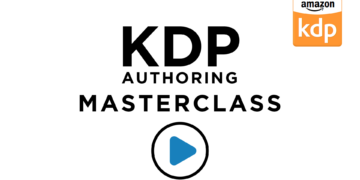How do you approach a problem?
Look for novel, disruptive solutions.
Stick to time-tested methods and be patient.
Seek innovation and design-driven answers.
Use logic and systematic processes.
Which business strategy do you prefer?
Constant innovation and risk-taking.
Value investing, looking for undervalued assets.
Creating unique products that customers don’t even know they want yet.
Building platforms and ecosystems to support wide-ranging products and services.
How would you describe your decision-making process?
Rapid and iterative, learning from failure.
Slow, deliberate, and calculated based on extensive data analysis.
Instinctual, guided by a strong vision.
Analytical and data-driven, but willing to take calculated risks.
What is your approach to failure?
It’s a necessary part of pushing boundaries and achieving grand goals.
It’s a part of life, but can be mitigated by due diligence.
It’s a lesson that informs future strategies.
It’s an opportunity for learning and improvement.
What’s more important in a business: the product or the profit?
Product – groundbreaking ones can change the world.
Profit – it’s a reliable measure of a business’s value.
Product – a truly great product can create its own market.
Both are important, and a balance must be maintained.
Which of these statements do you agree with most?
Failure is an option here. If things are not failing, you are not innovating enough.
Rule No. 1: Never lose money. Rule No. 2: Never forget Rule No.1.
Innovation distinguishes between a leader and a follower.
It’s fine to celebrate success but it is more important to heed the lessons of failure.
How would you describe your investment style?
High-risk, high-reward. I’m all in.
Long-term, value-driven, and patient.
Primarily in self and in ideas that I strongly believe in.
Balanced portfolio – some safe bets, some risky ventures.
How do you lead your team?
Inspire them with grand visions and ambitious projects.
Lead by example, show them the value of hard work and integrity.
Foster creativity, innovation, and a customer-centric approach.
Encourage teamwork, learning, and a data-driven approach.
What is your preferred sector to work or invest in?
High technology and space exploration, where there is uncharted territory.
Traditional sectors that promise stable growth over time.
Any sector where design and innovation can redefine the customer experience.
Technology, particularly software, where scalability can be exploited.
How do you approach learning and self-improvement?
Learn by doing and by taking on new, challenging projects.
Learn by reading, studying, and understanding the world deeply.
Learn by pursuing interests and passions, even if they seem unrelated.
Learn by seeking out diverse viewpoints, analyzing data, and testing ideas.
What’s your outlook on the future?
Optimistic, provided we take on ambitious goals like space exploration.
Cautiously optimistic, provided we make sound financial decisions.
Exciting, as long as we continue to innovate and disrupt traditional industries.
Hopeful, if we apply technology and systematic problem-solving to global challenges.
How do you feel about competition in business?
It’s necessary to drive innovation and breakthroughs.
It’s part of the business landscape but not my primary focus.
It doesn’t matter if you can create products that stand in a league of their own.
It’s a motivator, but collaboration and strategic partnerships can be equally important.
What’s your attitude towards risk?
It’s necessary and exciting, especially when pushing the boundaries of what’s possible.
It’s to be carefully managed and mitigated.
It’s acceptable when pursuing innovative, game-changing ideas.
It’s a part of any venture but should be calculated and data-informed.
How do you handle stress and pressure?
Use it as fuel to solve complex problems and achieve ambitious goals.
Stay grounded, patient, and stick to the plan.
Use it as a driver for innovation and to stay ahead.
Stay focused, learn from it, and turn it into an opportunity for growth.
How important is the role of technology in your business strategy?
Vital – Technology is key to solving humanity’s biggest challenges.
Important but not the only focus – good business fundamentals matter too.
Essential – technology paired with design can create exceptional customer
Crucial – technology drives productivity and scalability.
You think like Elon Musk
You are someone who thinks like Elon Musk, the visionary entrepreneur who founded Tesla, SpaceX, Neuralink, and The Boring Company. You have a bold and ambitious vision that drives you to pursue big challenges and take big risks. You are confident, decisive, optimistic, and resilient. You are not afraid to fail or learn from your mistakes. You are always looking for new opportunities to innovate and disrupt the status quo.
Advantages: Potential for high reward, groundbreaking solutions. Promotes rapid learning and growth.
Disadvantages: High risk, potential for frequent failures, can lead to stress and burnout.
Some books that can help you are:
1. “Zero to One” by Peter Thiel
Synopsis: Peter Thiel, co-founder of PayPal, shares his insights on innovation and how to build a successful startup. He emphasizes the importance of creating something new, going from “zero to one”, rather than copying things that already work.
How it can help: This book provides strategies for thinking differently, innovating, and creating game-changing companies, mirroring Musk’s approach to entrepreneurship.
2. “The Innovator’s Dilemma” by Clayton M. Christensen
Synopsis: Christensen explains why outstanding companies can fail in the face of disruptive innovation. He outlines the challenges that successful companies face and provides solutions for capitalizing on disruptive innovation.
How it can help: Like Musk, you’ll learn how to challenge the status quo and use disruption as a tool for success.
3. “The Hard Thing About Hard Things” by Ben Horowitz
Synopsis: Horowitz shares advice on building and running a startup. He talks about the tough problems that business schools don’t cover, like how to handle layoffs, how to poach competitors, and how to deal with a stubborn investor.
How it can help: This book can provide you with practical, hard-earned wisdom on navigating the tough decisions and problems encountered when breaking new ground in business, much like Musk.
You think like Warren Buffett
You are someone who thinks like Warren Buffett, the legendary investor who is the chairman and CEO of Berkshire Hathaway. You have a patient and strategic approach that guides you to pursue long-term goals and make wise decisions. You are cautious, realistic, pragmatic, and modest. You are not easily swayed by emotions or trends. You are always looking for value and quality in everything you do.
Advantages: Stability, reduced risk, consistent returns.
Disadvantages: Potentially lower overall returns, slower growth, may miss out on innovative opportunities.
Some books that can help you are:
1. The Snowball: Warren Buffett and the Business of Life by Alice Schroeder
Synopsis: This biography of Warren Buffet provides a detailed account of the life and career of the ‘Oracle of Omaha’. The book takes a comprehensive look at how Buffet amassed his fortune and the philosophy behind his extraordinary success. Schroeder shares insights into Buffet’s investment strategies, his perspective on money, business, and life, and his approach to personal relationships.
How it can help: Understanding Buffet’s life and strategies can help you grasp the patient, value-driven approach to investment and business. It also emphasizes the importance of integrity and reputation, core principles in Buffet’s philosophy.
2. The Intelligent Investor: The Definitive Book on Value Investing by Benjamin Graham with Jason Zweig
Synopsis: This book, often considered the bible of investing, outlines Graham’s philosophy of “value investing”, which shields investors from substantial error and teaches them to develop long-term strategies. Jason Zweig’s commentary adds a more modern perspective on Graham’s principles.
How it can help: You’ll understand Buffet’s approach to investment and learn how to make decisions that prioritize value and stability over quick profits. Buffet was a student of Graham and attributes much of his investment strategy to Graham’s teachings.
3. The Essays of Warren Buffett: Lessons for Corporate America by Warren Buffett with Lawrence A. Cunningham
Synopsis: This book is a collection of Buffet’s letters to the shareholders of Berkshire Hathaway. In these letters, Buffet provides his views on a range of topics from investing and finance to corporate governance, economics, and tax policy.
How it can help: The essays distill decades of Buffet’s thought leadership. Reading them can provide you with a profound understanding of how Buffet thinks about business, investing, and the principles that guide his decisions. You will gain insight into his long-term, value-focused approach to investing, his emphasis on quality, and his patient and careful decision-making style.
You think like Steve Jobs
You are someone who thinks like Steve Jobs, the iconic co-founder of Apple who revolutionized the personal computer, music, phone, and tablet industries. You have a creative and passionate vision that inspires you to pursue excellence and innovation. You are persuasive, charismatic, intuitive, and emotional. You are not afraid to challenge conventions or expectations. You are always looking for beauty and simplicity in everything you do.
Advantages: Potential for creating highly desirable products, building strong brand loyalty.
Disadvantages: High risk, potential for costly failures, may overlook practical constraints.
Some books that can help you are:
1. “The Lean Startup” by Eric Ries
Synopsis: Ries’s book presents a new approach to managing a startup by advocating for rapid prototype release and iterative design to meet consumer needs.
How it can help: This methodology mirrors Jobs’s approach to product development, emphasizing the importance of getting customer feedback quickly in order to improve and refine products.
2. “Design Thinking” by Tim Brown
Synopsis: Brown explores how thinking like a designer can transform the way we develop products, services, and strategies. He proposes a design methodology that begins with empathy for the user, encouraging innovation to meet real-world needs.
How it can help: This will help you better understand Jobs’s customer-centric approach, where deep understanding of customer needs and wants guides innovation.
3. “Insanely Simple: The Obsession That Drives Apple’s Success” by Ken Segall
Synopsis: Segall provides a look into Apple’s brand and the idea that simplicity is the core of its design and business philosophy.
How it can help: By understanding the power of simplicity in product design and user experience, you can better emulate Jobs’s relentless focus on the customer experience.
You think like Bill Gates:
You are someone who thinks like Bill Gates, the influential entrepreneur who co-founded Microsoft, Bill & Melinda Gates Foundation, Corbis, TerraPower, and Breakthrough Energy. You have a rational and systematic mindset that drives you to pursue your goals logically. You are cautious of taking risks, making objective decisions, and leading by data. You are always looking for facts, solutions, and improvements. You learn by analyzing and synthesizing, and you are systematic and methodical in the face of failure.
Advantages: Steady growth, adaptable, potential for wide-ranging impact.
Disadvantages: May be slower to innovate, risk of becoming too broad or unfocused.
Some books that can help you are:
1. “Business Adventures” by John Brooks
Synopsis: This collection of New Yorker stories explores some of the most dramatic moments in American business, providing timeless insights into corporate successes and failures.
How it can help: As one of Gates’s favorite books, it can provide valuable lessons about the complexities of corporate life and decision-making.
2. “The Road Ahead” by Bill Gates
Synopsis: Gates discusses his vision for the future of computing and how it will affect the way we work and live, focusing on the role of software and the Internet.
How it can help: Understand Gates’s mindset towards technology, its scalability, and its potential to solve large-scale problems.
3. “The Innovator’s Solution” by Clayton M. Christensen
Synopsis: Christensen provides solutions for companies aiming to stimulate growth through innovation, focusing on the successful strategies used by industry leaders.
How it can help: By understanding how successful innovators think and act, you can better emulate Gates’s balanced, analytical approach to innovation and business strategy.
4. Bill Gates: A Biography by Michael B. Becraft
Synopsis: This biography provides a comprehensive view of Bill Gates’ life, from his early days as a programming prodigy, through the creation and growth of Microsoft, to his current work with the Bill & Melinda Gates Foundation. The book offers an in-depth look into Gates’ rise to success, his vision for the future of computing, and his philanthropic efforts.
How it can help: Understanding Gates’ life, his approach to business, and his mindset can give you valuable insights into his unique blend of technological prowess, business acumen, and philanthropic vision. The book delves into his belief in the power of software, his understanding of the business side of the tech industry, and his dedication to tackling global problems. It can guide you in emulating Gates’ analytical approach, his focus on problem-solving, and his balanced perspective on competition and collaboration.
























